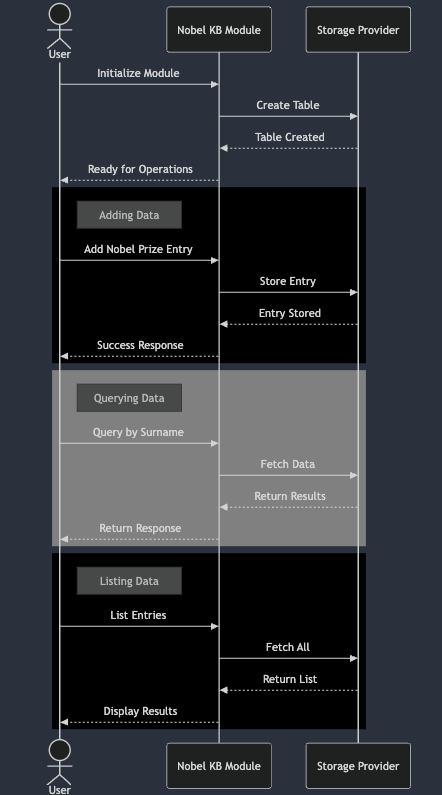Building Our Nobel Prize KB Module
Welcome to the core development module!
In this lesson, we'll build a production-ready Nobel Prize Knowledge Base module using Naptha's KB architecture. You'll learn how to implement storage providers, query handlers, and data validation - essential skills for creating robust KB modules that can be used in real-world applications.
The
run.py
contains our core implementation and serves as the entry point for the KB
module.
Understanding KB Architecture
Before we write any code, let's explore how our KB module works:
- Manages data through the Naptha Storage API
- Validates inputs using schema definitions
- Provides CRUD operations for Nobel Prize data
- Returns structured query responses

Building the Core Implementation
Let's break down our Nobel Prize KB implementation into its key components:
KB Module Initialization
The initialization sets up our KB with necessary configurations:
Data Population Implementation
The init method handles initial data loading:
Data Management Operations
The KB module provides comprehensive CRUD operations for managing Nobel Prize data allowing agent modules to add, read, update, and delete data:
Adding New Laureates
Listing Laureates
Deleting Data
The module supports both row-level and table-level deletions:
Query Implementation
The run_query method provides laureate search functionality:
Module Entry Point
The run function serves as our module's entry point:
Usage Examples
Here's how to test our KB module locally:
Error Handling Strategy
Our implementation follows a comprehensive error handling approach:
- Schema-level validation (Pydantic)
- Storage operation validation
- Data integrity checks (e.g., duplicate prevention)
- Detailed logging for debugging
Next Steps
In the next module, we'll explore:
- Testing our Nobel Prize KB module
- Deploying to Naptha Hub
Try experimenting with different queries and data operations before moving on. Understanding how the storage operations work will help when we move to deployment.